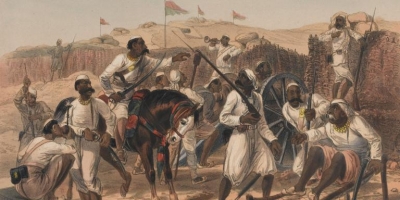
From 1757, the British East India Company had been bringing Indian areas under its rule, and expanding the Indian army. The conditions of service came into conflict. The final spark was the rumoured use of cow and pig fat in the newly introduced rifle cartridges, which the soldiers had to bite before loading into rifles, in 1857. While there has been no conclusive evidence to show that either of these materials was actually used on any of the cartridges in question, the perception gathered enough momentum.
The soldiers were offended and started openly expressing it. Later, sepoys in Meerut refused the cartridges. As a result of this, they were court-martialled and put in jail. This punishment angered their comrades, who rose on May 10, marking the beginning of the mutiny.
The Indian sepoys shot their British officers and marched to Delhi, where the local sepoy garrison joined them. By nightfall they had made old Bahadur Shah II the emperor. The mutiny soon spread to Kanpur, Agra and Lucknow and almost throughout northern India. The Indians, however, lost their battles and British India was taken over by the government.
Did you know?
The Indian Sepoy Mutiny is also referred to as just the Indian Mutiny or the Sepoy Mutiny. It is also called the First War of Independence.
Considering the Indian Sepoy Mutiny purely as a rebellion underestimates the root causes leading to it. It marked the realisation that the British were trying to undermine traditional Indian society.
Indian soldier Mangal Pandey’s name is often invoked when speaking about the mutiny, even though he was executed before the event took place. This is because he played a key part in the events immediately leading up to the mutiny.
Picture Credit : Google




